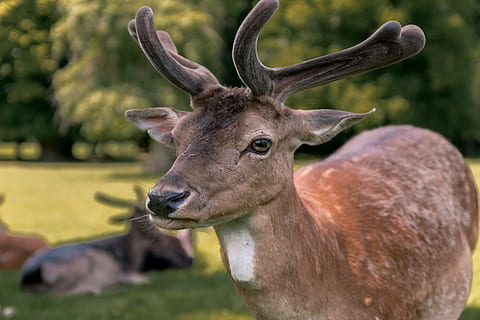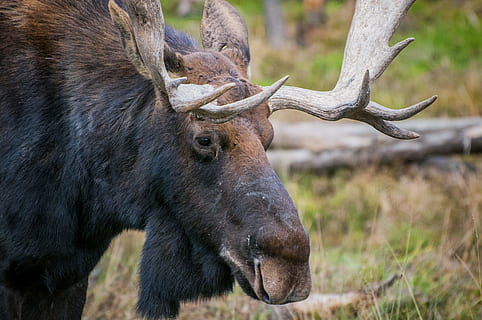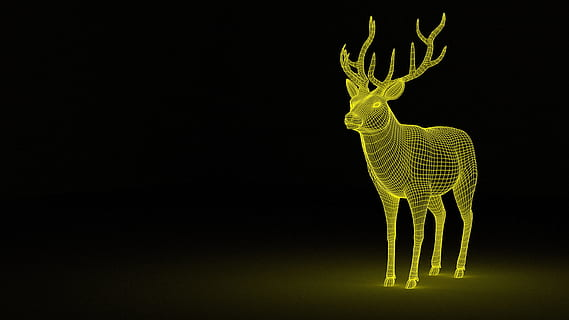A profoundly changed Covid variation was found in deer after almost a year in stowing away, scientists propose
An Omicron-like variation of the infection that causes Covid-19 - - one that seems, by all accounts, to be profoundly disparate from circling strains and stands out on a long part of the infection's genealogy - - has been found in a populace of white-followed deer in Ontario, Canada, as indicated by another review.
A similar strain has likewise been found in an individual from a similar region who had affirmed contact with deer, however there's no proof of supported transmission from deer to people, and it's probably not going to represent a prompt danger to people.
The scientists who originally described what they are calling the Ontario WTD clade say it's challenging to decide how this ancestry developed in light of the fact that it appears to have come inconspicuous and unsampled behind the scenes of the pandemic for nearly 12 months. They hypothesize that it poured out over from people to deer and afterward back to somewhere around one human.
The new part of the SARS-CoV-2 genealogical record has around 79 quality changes that put it aside from the first strain of the infection that was first recognized in Wuhan, China. About portion of those changes - - 37 - - have been found in creatures, however 23 of them have up until recently never been distinguished in deer.
"It's really a really huge review, I think, since we're seeing possible development of the infection in a creature repository," said J. Scott Weese, a teacher at the University of Guelph in Canada who spends significant time in the investigation of contaminations that leap among creatures and individuals.
Weese says that previously, we could see the SARS-CoV-2 infection pass among individuals and creatures however at that point stop. There wasn't a sign that it was persevering and changing in a creature populace after these overflow or spillback occasions.
The nearest popular family members of the new clade, nonetheless, date back 10 to a year to people and mink in Michigan, directly over the line from Ontario.
"It headed off to some place and adjusted over the direction of months to a year, and it appears as though no doubt that was inside a creature. We simply don't have the foggiest idea what species or where," says Weese, who inspected the concentrate however was not engaged with the exploration.
The review was posted in front of friend audit on the preprint server BioRxiv.
Indications of another creature repository
In numerous ways, deer are the ideal hosts for SARS-CoV-2, Weese says. They are profoundly helpless to contamination, yet they don't become exceptionally ill, and they home in gatherings, making it simple for the infection to spread.
This new strain was distinguished during hunting season. Trackers brought the deer they killed to researchers who cleaned and tried them.
The analysts say there's no proof that this strain has brought about supported deer-to-human or human-to-human transmission. Notwithstanding, hunting season has finished in the locale, and the Omicron wave has moved throughout, convoluting further reconnaissance.
Early lab tests recommend that the new strain is effectively wrecked by antibodies made because of immunization, which makes this variant of the infection improbable to represent a prompt danger.
The issue could occur from now on.
"I think the vast majority were thinking - - and it's valid - - that people are driving the pandemic," said concentrate on creator Bradley Pickering, who is the head of extraordinary microorganisms in Canada's National Center for Foreign Animal Disease. "So presently, it appears as though this is circling in untamed life."
Assuming that it stays in deer in North America, it could proceed to flow and change.
"You in all actuality do have that gamble, that it's consistently there and that it could - - anytime - - it could sort of returned to individuals," he said.
Pickering says the scientists will attempt to restart their observation of the deer populace to keep on checking the development of the infection.
Assuming deer have turned into a genuine creature repository, that is an interesting issue to address, and it flags another stage in the pandemic, Weese says.
"We really want to get past a human-driven approach. Individual means individual; it doesn't mean individuals," Weese said. "It doesn't make any difference on the off chance that it's coursing in 100 million individuals in a completely inoculated region of the world or then again assuming it's flowing in 10 million deer in North America. It's coursing, and as the infection flows and recreates, that is the way transformations occur."
One more way for the infection to make due
At the point when SARS-CoV-2 turns up in a populace of cultivated creatures, similar to mink, or the hamsters sold at pet stores in Hong Kong, they are regularly separated to contain the spread of the infection.
That is unrealistic when the infection is in a populace of wild creatures.
There are creature antibodies, however veterinarians utilize those for similar explanation they give them to people, to forestall infection and keep the creature - - a tiger at a zoo, for instance - - from turning out to be seriously sick or passing on.
"Antibodies aren't exceptionally viable at forestalling transmission," Weese said. "We would must have a creature antibody that is superior to a human immunization, and the creature immunizations are a more established innovation, so that would be a high bar to set." Click on image Buy now






